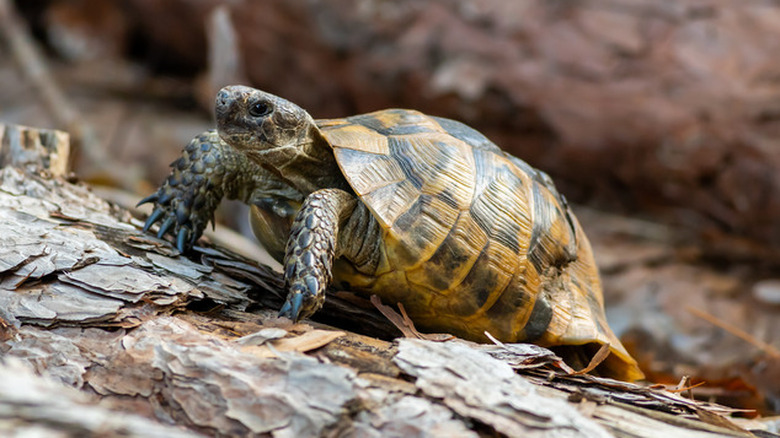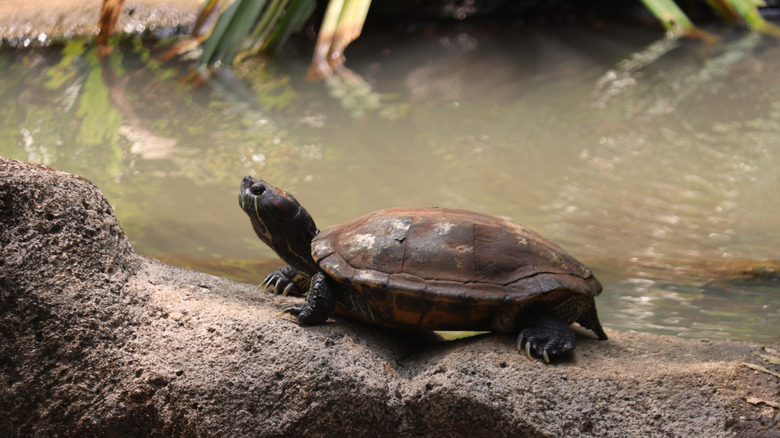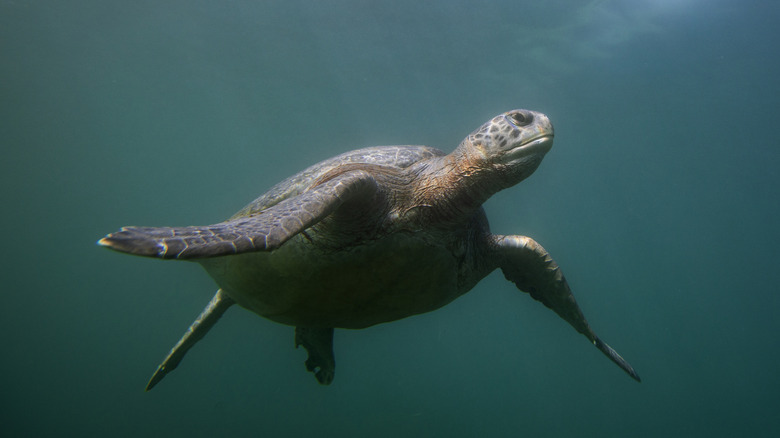How Fast Does A Turtle Run?
If you grew up reading the Aesop fable about the tortoise and the hare, you'll know the turtle is not the fastest animal in that race. However, the actual speed of turtles might surprise you. Some species move 1 mile per hour on land, and sea turtles can set impressive records in the water, especially when threatened.
"Turtles" is a term referring to sea turtles, freshwater land turtles, and tortoises. So, determining turtle speed depends on the type and species. Clearly, a turtle's strong shell is their best defense against predators. Turtles are attached to their shells; they are not resting inside. Pulling themselves into their shell is their first defensive impulse, but evading is sometimes necessary, and that's when water gives turtles a speed advantage.
Turtle speed on land
Soft-shelled turtles, such as the smooth softshell turtle and the spiny softshell turtle, are believed to be the quickest land turtle, moving at speeds of an estimated 3 miles per hour. Some reports claim that certain types, such as the Florida soft-shell, can sprint up to 15 miles per hour, making them the fastest land turtle species. River cooters, meanwhile, move at a rate of 1 mile per hour.
Among the fabled tortoises, the Seychelles giant tortoise has a documented land speed of .23 miles per hour, which is notably slower than the soft-shelled turtle. Both land and sea turtles swim three to four times faster in the water than they do on land.
Turtle speed in the sea
Unlike tortoises, who can't swim, turtles are strong swimmers who can breathe underwater for extend periods of time. In the water, turtles are swift and agile. Sea turtles, also called marine turtles, move three to four times faster in the water than on land, which is good because they spend most of their time in the water. Sea turtles have strong flippers. The front flippers thrust the turtle forward, while the back flippers act as rudders for steering. Shells are cumbersome on land, but in water, they become streamlined and are efficient for cutting through the waves.
Marine turtles achieve speeds of up to 10 knots while migrating through the sea. Green sea turtles, for instance, are able to swim 300 miles in 10 days at speeds between 1.5 and 6.3 miles per hour. Leatherback sea turtles are faster, swimming up to 22 miles per hour. Even hatchlings are strong swimmers. Within 30 hours of hatching, baby turtles can swim a 25-mile distance if they reach the water from their sandy nests.
Land turtles, such as cooters and red-eared sliders, also swim well thanks to webbed feet allowing them to paddle through rivers and ponds. Other land turtles, including snapping turtles and alligator turtles, actually walk along the bottom of water bodies. Larger freshwater turtles don't swim as quickly as smaller freshwater turtles, but the average freshwater turtle swimming speed is 10 to 12 miles per hour.


